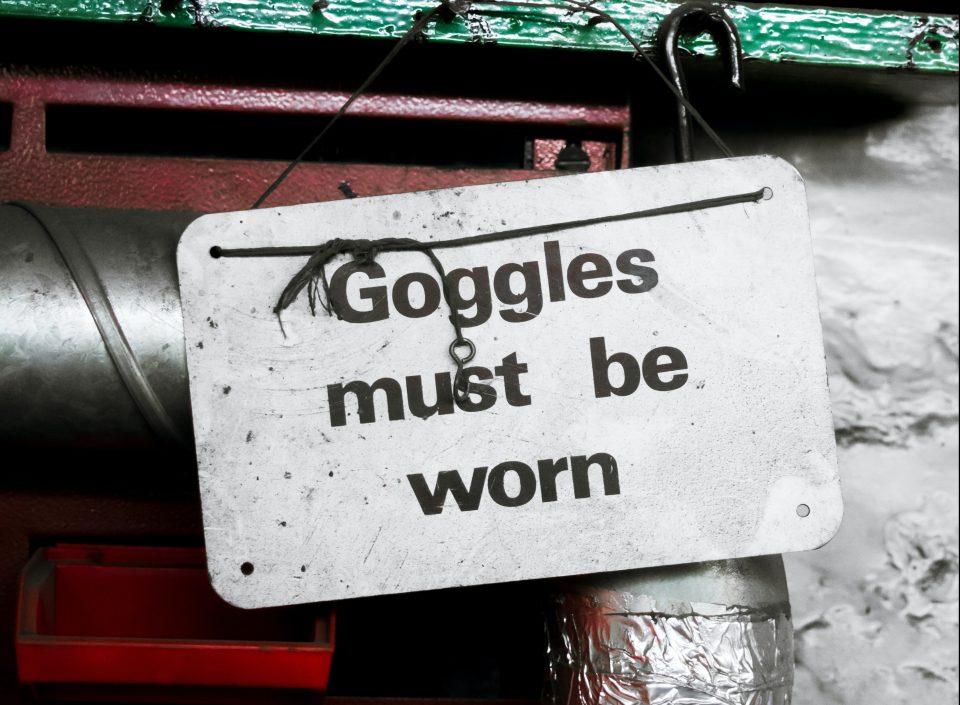Health and safety in a warehouse environment is essential to keep up to date to ensure the safety of your staff and equipment. Failure to comply with such regulations could result in fines or even imprisonment. Based on published government requirements, we have listed some ways for you to improve the health and safety rules for your warehouse.
PPE that is not damaged and meets requirements
Personal Protective Equipment is needed to meet a range of issues. This can include, but is not limited to: gloves, hard hats and high vis jackets. The PPE that you acquire for your workplace will need to meet industry standards and government regulations to guarantee the safety of your staff.
One aspect of this is having regular checks of PPE and removing the items that are damaged. Damage on PPE can reduce its effectiveness and could even result in it being ineffective at protecting the wearer. For example, a crack or large dent in a hard hat could result in it breaking the next time it is impacted and therefore still cause harm to the wearer. Checking PPE regularly can prevent this from happening, and replacement equipment should be made available where appropriate.
Vehicle maintenance
Regular checks and maintenance on warehouse equipment not only improves performance but also reduces the risk of malfunction resulting in injury. This can be done in a number of ways, such as requiring all users of vehicles to inspect it once they have finished their shift, designating a time once a week for all vehicles to be checked over or sending the vehicle for regular maintenance. Here at MotorMovers, we offer routine servicing and maintenance packages for those who buy our electric tugs. This is in place to maximise performance and minimise operational downtime. Check out our page for more information on our servicing packages.
Vehicle training
Preventing accidents in a warehouse environment due to vehicles and heavy equipment can be done through providing the necessary training for those that operate it. This could mean having only a select group of staff who are trained to reduce the number of people who can operate them, or training everyone to ensure they are aware of the risks.
Anyone that is seen to be misusing the equipment or not using it when trained to do so should receive adequate disciplinary action. Misuse or improper handling of vehicles such as forklifts could cause danger to those around them.
As a standard practice, check with the company you purchase your vehicles from as they may provide specific training for their equipment. At MotorMovers, we offer further training after you make a sale with us for any of our electric tugs. Although the tugs do not require a licence to operate, proper training should still be followed in order to maintain the safety of all staff on site.
Marking out specific pedestrian and vehicle routes
Much like public roads and pathways, designating routes for vehicles such as forklifts or tugs reduces the risk of collision with pedestrians. These can be marked out in paint or tape on the floor to provide guidance for where vehicles and pedestrians should or should not be. Informing your current staff and any new staff you hire of these rules is essential so that they can understand and clearly follow them.
Another aspect of this is ensuring that the paths for workers on foot are wide enough so they don’t have to walk in the way of a vehicle. If this proves difficult due to the width of the path needed and the size of the vehicles, either look at how you might be able to make these areas wider through moving obstacles or creating different routes all together.
Good lighting
Walking around a warehouse that is not well lit can be extremely dangerous, especially if you make use of vehicles in your building to transport heavy goods. Poor lighting can cause trip hazards, danger on stairs and potential collisions with vehicles.
One way to ensure you have good lighting in your warehouse is to make sure pathways are illuminated and all emergency exits have a lit up sign to indicate where to go.
Good lighting doesn’t just mean bright lights however. It also means that lights need to be at a comfortable level for people to go about their day without excess glare or removing lights that flicker.
Take a look around your warehouse for areas that aren’t illuminated that should be, areas that are potentially too bright for those working in them or flickering.
Heavy lifting training
Everyone who works in a warehouse environment that is required to lift heavy objects should receive up to date manual handling training. This is in line with the Manual Handling Operations Regulations set out by the UK government, wherein employers are required to ‘avoid, assess and reduce the risk of injury from manual handling’.
Part of this could also involve assessing the need for back and knee supports for heavy lifting. Providing such equipment could reduce the risk of back and knee injuries and promotes the health and safety of your staff.
Improving health and safety in a warehouse environment can be multifaceted, but to get more information on how our electric tugs could help you, contact a member of the team today.
